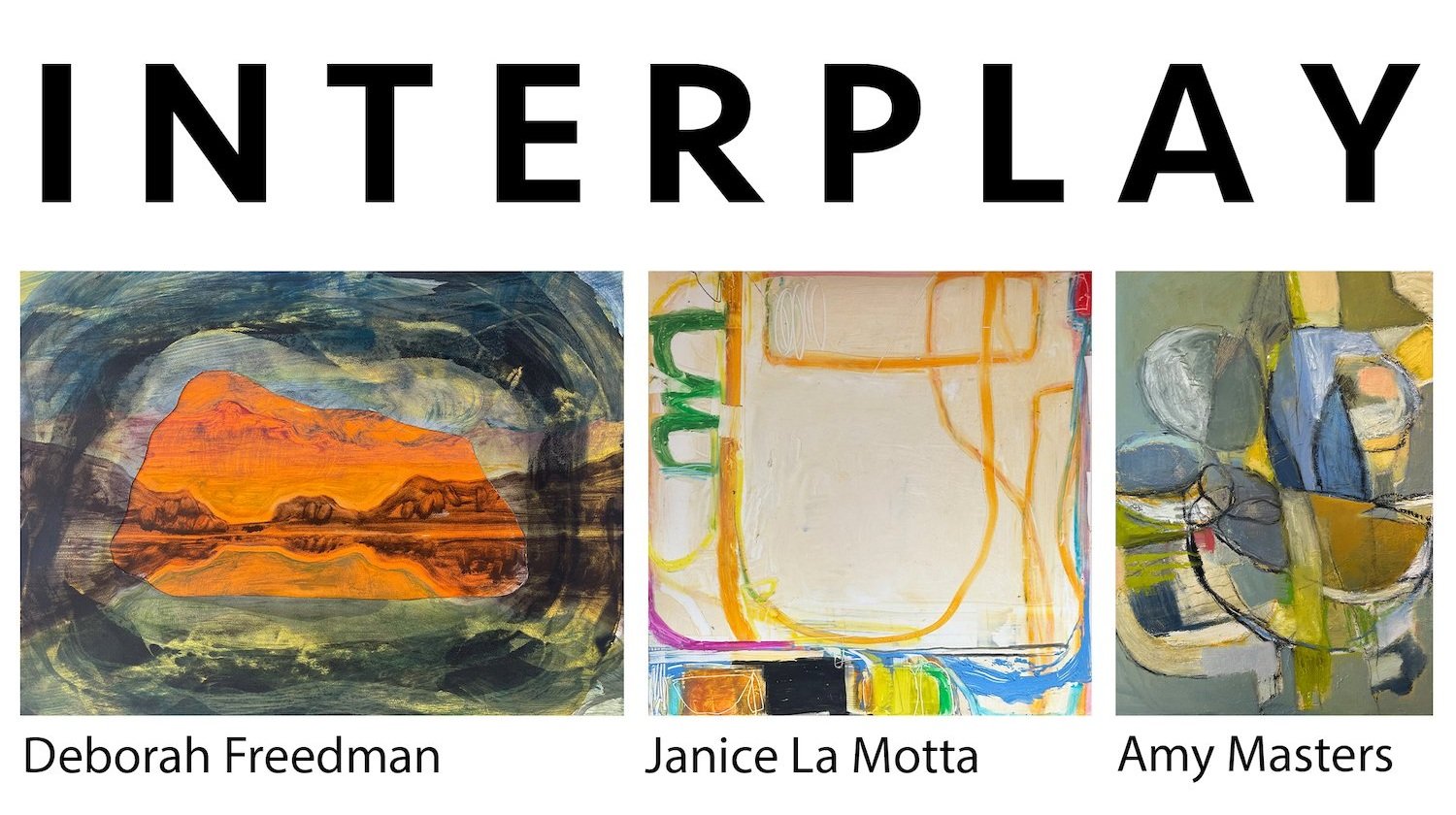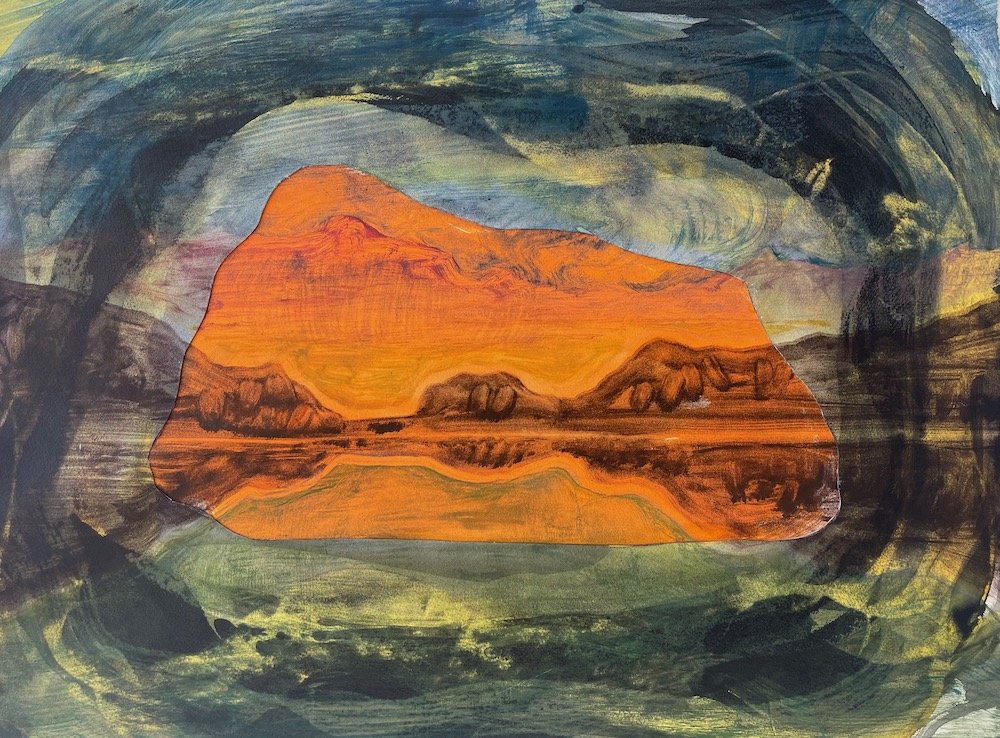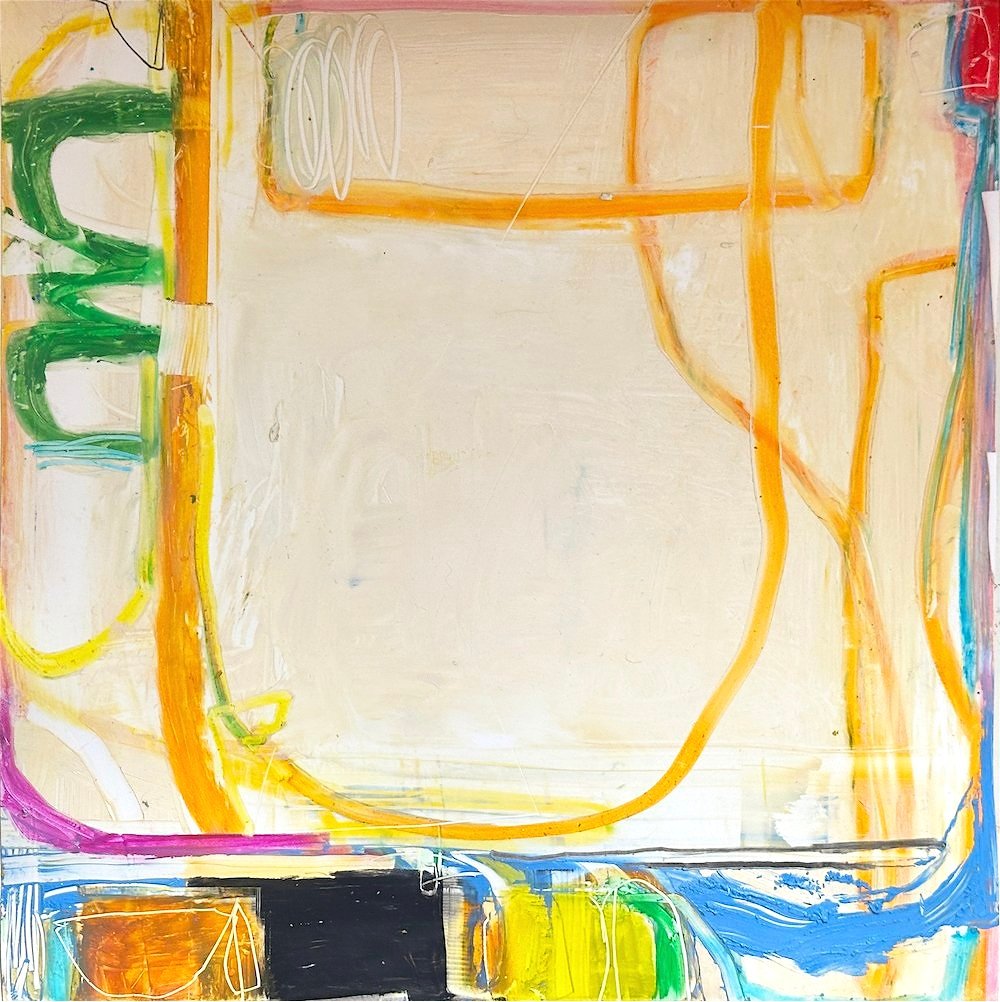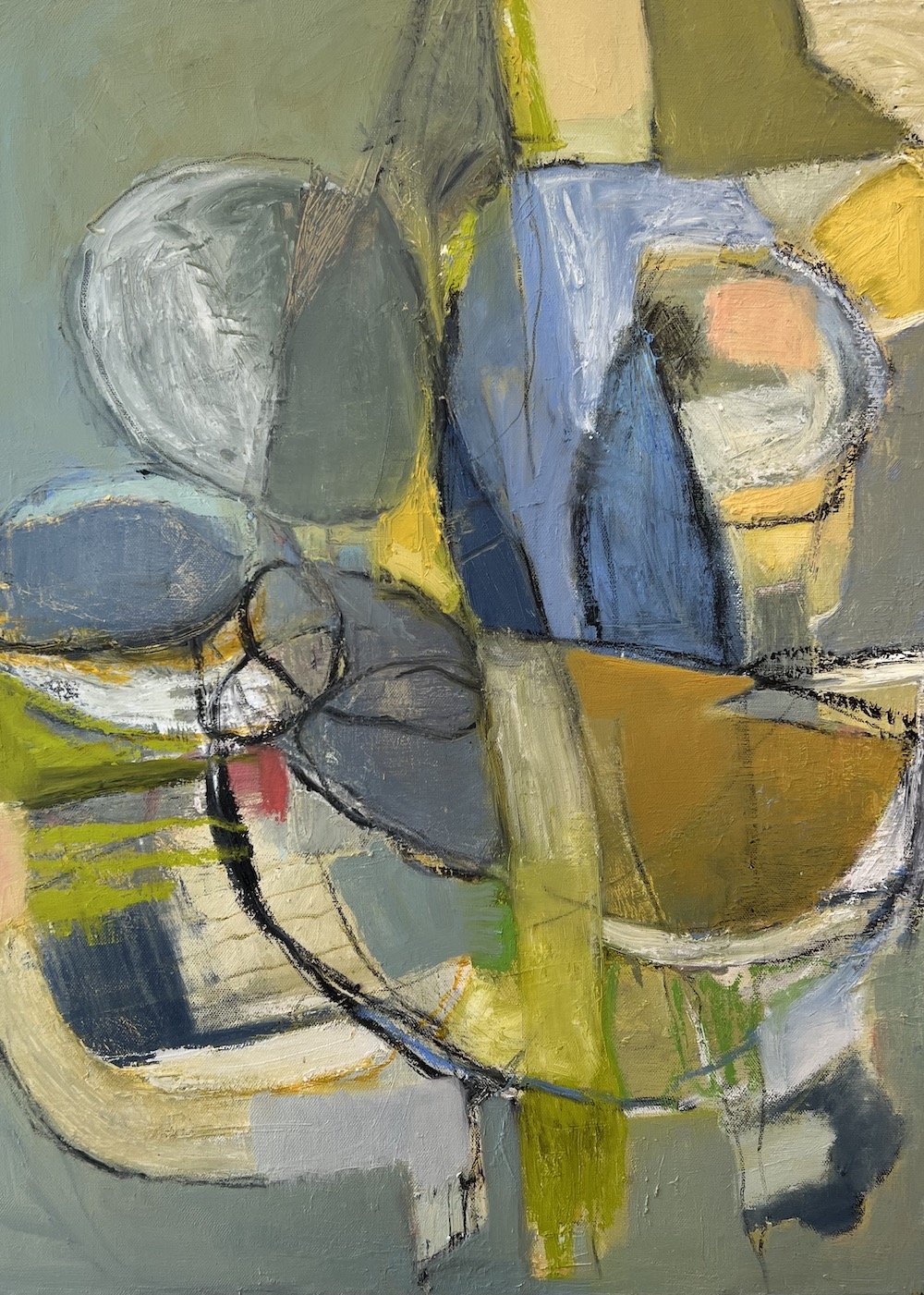CURRENT EXHIBITION
May 4 - June 9
opening reception: Saturday May 4, 4-7pm
artist talk: Sunday May 26
1053 Gallery is pleased to present, Interplay, an exhibition of new paintings by Deborah Freedman, Janice La Motta, and Amy Masters, curated by Lindsay Comstock and Monte Wilson.
The mid-career artists, whose studio practices are based in Upstate New York, play with the painting process through quotidian objects, found materials, re-purposed works, and collage, in series that mark new directions for each of them. Drawing from internal and external landscapes and their personal perception of space, they re-imagine and transform physical, material, and stylistic constraints into dynamic compositions during a period of global instability.
Deborah Freedman, a painter and printmaker, has spent the last 25 years observing and painting the Ashokan Reservoir and a pond near her property. She has monocular vision, meaning her eyes interpret input separately, so she perceives space in a unique way. Painting became a necessity to create the three-dimensional depth that she can’t see through her eyes. Two years ago, she began mining her archive and repurposing monoprints and canvases into new collaged landscapes for her series, Imagined Places, overlapping her past with her present, and echoing collages she made 40 years ago with marbleized paintings. In reclaiming these older works, she also chose to reclaim her body in the landscape, including, for the first time, a human figure in these dreamlike scenes. Her works investigate the threatened landscape and the dualities present in the human psyche as we navigate these times. These works have the effect of portals, wombs or geodes that she heals through collage.
The works of Janice La Motta comprise a time (2020-24) of deep immersion in her studio practice after an extended period working as an arts administrator. The pandemic offered her both re-entry to her studio practice and limitations on the materials she could use. The three series presented in this exhibition show her transition from small, abstract compositions (Of Power and Time) to studies on lines and color (LS) and then, eventually, after a need and a desire to work with found materials, a study of blue house paint and an interest in the spade shape. For a time she worked on large canvases before readjusting her perspective to the small scale of her most recent series, Box Tops, made in the first few months of 2024. This collage series merges her varied interests: the small compositions are informed by her desire to re-purpose materials, this time a curiosity about the shapes that the box tops lying around her house create, while working with the lines and forms that emerged through her paintings. These works, full of gesture and quick movement, showcase an exciting area of inquiry in this new art-making chapter for La Motta.
In her most recent body of work, made in 2024, Amy Masters has transitioned the viewer from the external form of the house and the brighter colors once a hallmark of her work, to a more muted palette as she welcomes in the shapes and forms found indoors. She speaks to the instability of the moment by painting precariously perched objects—cups, bowls, potted plants, bottles—and abstracting their forms, as both an exercise in loosening up her own practice and playing with new materials, namely, oil sticks and wax pencils. The works speak to both the artist’s newfound freedom in her work and the careful balancing act of the present moment.
This exhibition comprises works that honor the creative evolution that can only be witnessed over time. All three artists are engaging in a period of dynamic flow and transformation in their art-making practices, incorporating themselves, new materials, and new styles into their work. These works bubble with vitality, almost as if we’re observing a river flow and shift the landscape in the spring, taking with it what no longer belongs, and leaving clarity in its wake. There is an insistence on continued growth in the lives and work of these three artists, who have resisted stagnancy in their creative practice; rather their work speaks to a constant curiosity about what it means to honor oneself and our kaleidoscopic consciousness: multifaceted, turning, shifting, changing, blooming on this rotating planet. Good art appeals simultaneously to the many and the one—it is both personal and universal. And like the time of year in which this exhibition is hung, these works speak to the qualities of the spring season: renewal, growth, and potential.



